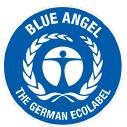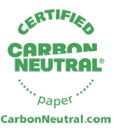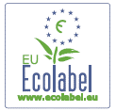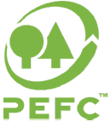 We all need to become more environmentally conscious, so there’s a greater focus than ever on workplace sustainability. Trying to find greener products, and making sure they truly are better than the alternatives, is a complex task.
We all need to become more environmentally conscious, so there’s a greater focus than ever on workplace sustainability. Trying to find greener products, and making sure they truly are better than the alternatives, is a complex task.

Julie Hadley, Corporate Social Responsibility Manager at Banner, explains what she looks for in green workplace products…
Once you’ve acknowledged that you really do need to make a purchase and other options have been exhausted, you’re in a prime position to swap to a cleaner, greener alternative, but choosing one product over another can be a headache.
Just because something is said to be compostable, doesn’t mean it will end up in a composting facility, so it could decompose and damage the environment. Sometimes long-term use of a plastic cutlery item will be better for the environment than a disposable wooden alternative, especially if the timber isn’t sustainably sourced. Realistically speaking, comparing life-cycle analysis of products is the only way to ensure you compare apples with apples. However, manufacturers are not fully there yet, which is why it’s a positive step for consumers and procurement professionals to review product certifications and accreditations to help make informed decisions.
There are a wide range of sustainable credentials and marks on products, dependent on the product category. Some relate to raw material sourcing and labour standards whilst others focus on the efficiency of the manufacturing process, energy consumed in the use of the product or offsetting its carbon footprint to become carbon neutral. Selecting any one of these products over a product that does not have a certification or accreditation will in most cases reduce the overall impact of your purchase.
Without a supplier who focuses on bringing you a wide range of sustainably accredited products, you might still feel like you’re in the dark about what the accreditations mean and what to consider. The selection below is a starting point when considering which sustainable products are best for your business needs: Blue Angel – The Blue Angel ecolabel identifies and awards products that have a reduced environmental impact compared to competitor products. You might see it on products such as paper, stationery or utensils. The accreditation is hard to obtain, so you know it’s up to standard; products boasting this label will have been through rigorous testing.
Blue Angel – The Blue Angel ecolabel identifies and awards products that have a reduced environmental impact compared to competitor products. You might see it on products such as paper, stationery or utensils. The accreditation is hard to obtain, so you know it’s up to standard; products boasting this label will have been through rigorous testing.

Carbon Neutral – It is extremely difficult to eliminate carbon from manufacturing processes. The Carbon Neutral accreditation highlights products that have had what carbon they do produce offset through an accredited scheme – a key consideration for businesses looking to reduce their net-carbon emissions.
 Energy Star – The Energy Star accreditation looks to provide better insight into electrical appliances, with a set of specific criteria on the energy consumption of various products. You might see this on printers, shredders or laptops. Technology that has earned this accreditation will consume less energy in its usage, reducing a business’ energy bills and resulting carbon footprint.
Energy Star – The Energy Star accreditation looks to provide better insight into electrical appliances, with a set of specific criteria on the energy consumption of various products. You might see this on printers, shredders or laptops. Technology that has earned this accreditation will consume less energy in its usage, reducing a business’ energy bills and resulting carbon footprint.
 EU Ecolabel – This accreditation highlights environmental excellence to products and services that maintain high environmental standards throughout a product’s life cycle, from raw material processing and production to distribution and disposal. This ecolabel is designed to ISO standard 14024 for environmental labelling and is mainly used within Europe.
EU Ecolabel – This accreditation highlights environmental excellence to products and services that maintain high environmental standards throughout a product’s life cycle, from raw material processing and production to distribution and disposal. This ecolabel is designed to ISO standard 14024 for environmental labelling and is mainly used within Europe.
 FSC/PEFC – Timber based products such as wood, paper, card and now bamboo carry this mark alongside a licence number to verify it’s been audited from source. The licence covers the welfare of those working in the industry as well as the management of the forests and therefore helps to control illegal sourcing of product and damage to forests that cannot be replaced.
FSC/PEFC – Timber based products such as wood, paper, card and now bamboo carry this mark alongside a licence number to verify it’s been audited from source. The licence covers the welfare of those working in the industry as well as the management of the forests and therefore helps to control illegal sourcing of product and damage to forests that cannot be replaced.
It’s worthwhile noting that some products may carry more than one certification or have credentials for which there is no certification at present. Products which have a degree of circularity, such as a high recycled content or those that can be reprocessed by the manufacturer, are the best way to avoid virgin material use in products.
By combining certifications and credentials, then consolidating deliveries through your supply partner and considering what might happen to a product when you dispose of it, you are taking an excellent step towards reducing the environmental purchasing impacts of your business.
If there’s another accreditation you’re interested in, not listed above, there’s a full breakdown of the meaning of popular green accreditations, and what to look for in green products that aren’t accredited, here.
As featured on Workplace Insight.net - here
More Information
For more information on making the switch to greener products, view our B Green catalogue.
To get in touch with us call your account manager, phone us on 0843 538 3311 or to become a customer email Contact.Banner@BannerUK.com.


